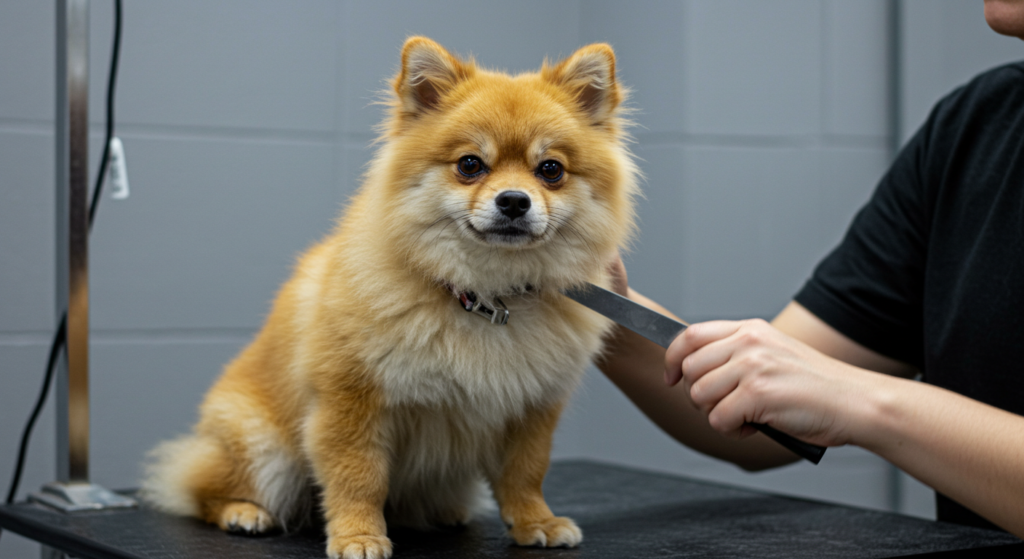Table of Contents
- Introduction
- Why Spring Grooming is Essential for Pets
- Essential Spring Grooming Tips
- Regular Brushing
- Proper Bathing Techniques
- Trimming and Coat Maintenance
- Tools and Products for Effective Grooming
- Conclusion
- FAQs
Introduction
As winter fades and spring arrives, the change in season brings about shifts in your pet’s grooming needs. With warmer weather, pets often shed their winter coats, making grooming a crucial part of their care routine. This article provides essential spring grooming tips to help your pet stay comfortable, healthy, and happy during the seasonal transition. From brushing to bathing and trimming, we’ll cover everything you need to know to keep your pet’s coat in top condition.

Why Spring Grooming is Essential for Pets
Spring grooming is more than just keeping your pet looking good—it’s about maintaining their overall health and comfort. As temperatures rise, pets shed their thick winter coats to adapt to the warmer weather. Without proper grooming, loose fur can lead to matting, skin irritation, and even overheating. Regular grooming also helps you spot potential health issues like ticks, fleas, or skin infections early on.
Essential Spring Grooming Tips
1. Regular Brushing
Brushing is one of the most important steps in spring grooming. It helps remove loose fur, prevents matting, and distributes natural oils throughout your pet’s coat.
- For long-haired pets: Use a slicker brush or undercoat rake to remove tangles and excess fur.
- For short-haired pets: A bristle brush or grooming mitt works well to remove loose hair and keep the coat shiny.
- Frequency: Brush your pet at least 2-3 times a week, or daily during peak shedding season.
2. Proper Bathing Techniques
Bathing helps remove dirt, allergens, and loose fur from your pet’s coat.
- Use a pet-friendly shampoo: Choose a shampoo that suits your pet’s skin type (e.g., hypoallergenic for sensitive skin).
- Water temperature: Use lukewarm water to avoid shocking your pet.
- Drying: Towel dry or use a low-heat blow dryer to prevent chilling.
3. Trimming and Coat Maintenance
Trimming your pet’s coat can help them stay cool and comfortable during spring.
- Focus on problem areas: Trim around the ears, paws, and sanitary areas to prevent dirt buildup.
- Professional grooming: For complex trims or specific breeds, consider visiting a professional groomer.
- Nail care: Don’t forget to trim your pet’s nails to prevent overgrowth and discomfort.
Tools and Products for Effective Grooming
Having the right tools and products can make spring grooming easier and more effective. Here’s a list of essentials:
- Brushes: Slicker brush, undercoat rake, bristle brush, or grooming mitt.
- Shampoos: Pet-friendly, hypoallergenic, or medicated shampoos as needed.
- Nail clippers: Guillotine-style or scissor-style clippers for nail trimming.
- Grooming wipes: For quick clean-ups between baths.
- De-shedding tools: FURminator or similar tools for heavy shedders.
Conclusion
Spring grooming is a vital part of keeping your pet healthy and comfortable as the seasons change. By incorporating regular brushing, proper bathing, and timely trimming into your routine, you can help your pet transition smoothly into the warmer months. Not only does grooming improve their appearance, but it also strengthens the bond between you and your furry friend.
FAQs
1. How often should I brush my pet during spring?
During peak shedding season, aim to brush your pet 2-3 times a week or even daily for heavy shedders.
2. Can I use human shampoo on my pet?
No, human shampoo can disrupt your pet’s skin pH. Always use a shampoo specifically formulated for pets.
3. How do I know if my pet’s coat needs trimming?
If your pet’s fur is matted, excessively long, or causing them discomfort in warmer weather, it’s time for a trim.
4. What should I do if my pet hates being groomed?
Start with short grooming sessions and reward your pet with treats and praise. Gradually increase the duration as they become more comfortable.
5. Are there specific tools for different breeds?
Yes, certain tools like undercoat rakes are better for double-coated breeds, while slicker brushes work well for long-haired pets.
